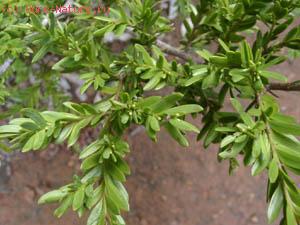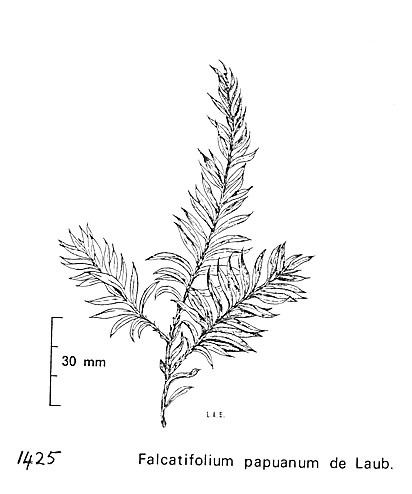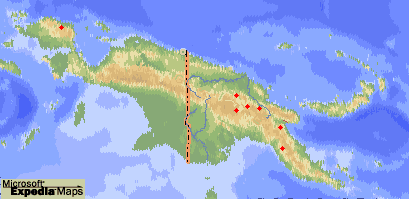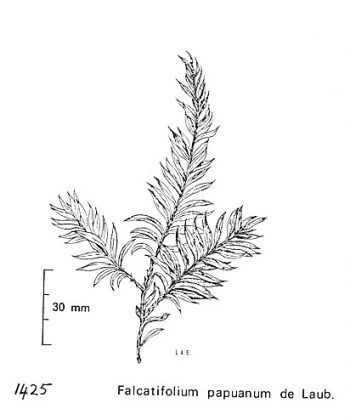
Falcatifolium papuanum, as described in 1969 by David John de Laubenfels (1925-2016), in Journal of the Arnold Arboretum, vol. 50, is commonly known as New Guinea sickle pine; as well as Mungag or Tugl in the local languages of Papua, New Guinea. The species name describes this species as endemic to Papua - New Guinea.
It is superficially similar to the New Caledonian sickle pine (F. taxoides), but in F. papuanum, the leaves are prickly and the podocarpium in the seed cones is larger.
Description. New Guinea sickle pine is an evergreen coniferous species of tree that grows to mature heights of 20 to 70 feet (6 - 22 m), with a trunk from 3.2 to 24 inches (8 - 40 cm) in diameter, measured at breast height. Crown is broadly dome-shaped and branches are slender with numerous branchlets densely clothed with foliage.
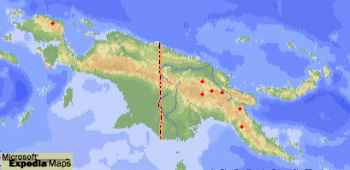
Distribution. This species is native to New Guinea, growing in moist mountain forests at elevations of 5,000 to 7,500 feet (1,500 - 2,400 m) above sea level. It grows naturally in the forest understory; typical associates include Nothofagus, Myrtaceae and other Podocarpaceae.
Hardy to USDA Zone 9 - cold hardiness limit between 20° and 30°F (-6.6° and -1.1°C).
